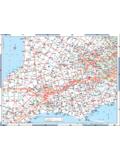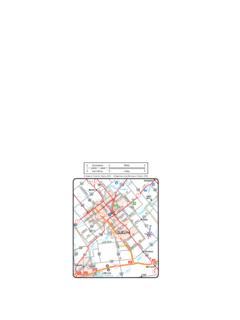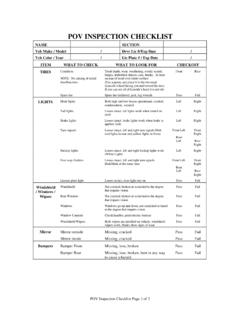Transcription of Winter Safe Driving - Ministry of Transportation
1 1 Winter DrivingBe Prepared, Be Safe! Traveller Information ServicesGTA: 416-235-4686 Provincial TTY: 1-866-471-8929 Niagara Region TTY: 905-704-2426 This information is also available in the blue pages of your telephone directory OR on the Internet: Winter Driving brochure can be found online you ll find to Winter Conditions .. 2 Preparing for Driving in Winter .. 2Be Prepared: Is Your Vehicle Ready? .. 2 Winter Driving Survival Kit .. 4 Before Heading Out .. 5 Winter Driving - Handling Your Vehicle Braking .. 6 How to Regain Control of your Vehicle in a Skid .. 6 Stopping Distances .. 7 Winter Driving - On the Road Spacing .. 8 Two-second Rule .. 8 Snowy Roads .. 9 Ice, Snow and Slush Spray .. 9 Visibility .. 9 Winter Maintenance Tools .. 10 Snow and Ice Control Practices.. 11 Plowing .. 12 Leaving Room for Plows .. 12 Managing Snow and Ice with Salt .. 14 Providing Traction.
2 15 Contracting of Snow and Ice Control Services .. 15 Maintenance Activities Before, During and After a Storm .. 16 The Public Should be Aware ..17 Emergency Vehicles .. 18 Move Over Law ..18 Tow Trucks ..18 Highway Closures .. 19 The Unexpected .. 20Be Road-Ready and Weather-Wise .. 212 Adjusting to Winter ConditionsOntario winters can be challenging for motorists. safety is a top priority of the Ministry of Transportation . Every effort is made by the Ministry and its contractors to keep highways safe and to provide efficient Winter maintenance services for the travelling public. Weather conditions can be unpredictable, placing extra demands on your vehicle and your Driving skills. Ensure you are well prepared for Winter roads and always adjust your Driving speed to road and weather for Driving in WinterStay alert, slow down, and stay in control the three key elements of safe Winter Driving . Drive according to highway and weather conditions.
3 Maintain a safe following distance between you and the vehicle in front of you to avoid situations where you may have to brake Prepared Is Your Vehicle Ready?Get your vehicle Winter -ready with a maintenance check-up. Don t wait for Winter to have your tires, battery, belts, hoses, radiator, oil, lights, brakes, exhaust system, heater/defroster, wipers and ignition system sure that your vehicle is mechanically ready for Winter conditions. Keep your fuel tank sufficiently full at least half a tank is be sure you have sufficient windshield washer fluid in the reservoir. You may wish to keep an extra jug in the snow and ice from all windows, lights, mirrors and the roof. After starting your vehicle, wait for the fog to clear from the interior of the windows to ensure good visibility all your tires checked before Winter begins. Remember to check tire air pressure frequently, as it decreases in cold weather. Also, double-check the tightness of each tire s wheel nuts to ensure your tires have not come loose; this is especially important for those who seasonally change their Winter and all-season condition of your vehicle s tires is important.
4 Worn or damaged tires can affect your ability to drive safely. It is best to replace tires before the tread depth reaches the regulatory minimum of mm.* Studies indicate that a 3 mm deep tread can stop a vehicle on wet pavement in a 25% shorter distance than a tire with a mm deep tread. Drivers should check the manufacturer s wear indicator mark on tires to see if they need replacing. All tires have tread wear indicators, which are small bars of rubber found between the tread blocks of a tire. When the tread is worn flush with the tread wear indicators, the tire has reached its wear limit and must be replaced as it no longer provides sufficient traction in the rain or snow. Regular or all-season tires, including wide and high-performance tires, may be adequate in some areas, but may not be suitable for Driving in the snowbelt regions of southern Ontario and throughout the north. If you live and drive in these areas, consider using Winter tires.
5 They provide better traction, braking and handling during frost, snow, slush, and particularly under icy conditions. Installing four Winter tires provides greater control and stability. Never mix tires of different tread, size and construction. Also, consider traction and stability control options when selecting your next vehicle.* Recommended tread depth from the Highway Traffic Act. Regulations 611 and items include: Ice scraper/snowbrush Shovel Sand or other traction aid Tow rope or chain Booster cables Road flares or warning lights Fuel line antifreeze Flashlight and batteries First aid kit fire extinguisher Small tool kit Extra clothing and footwear Blanket Non-perishable energy foods , chocolate or granola bars, juice, soup, bottled water Candle Matches or lighterIt s a good idea to keep a Winter survival kit in your vehicle. Having essential supplies can provide comfort and safety for you and your passengers should you become stranded.
6 Winter Driving Survival KitDid you know? Candles that provide light will also generate some heat for drivers and passengers while awaiting Prepared! Before Heading OutWear comfortable clothing that doesn t restrict your movement while at the wheel. Keep warm clothing for getting out of your you are travelling a long distance, plan your route ahead of time. Let someone know of your destination and expected time of weather and road conditions before heading out. You may need to allow yourself extra time for travel, or wait until conditions improve. Checking weather websites for local/regional forecasts and radar images will assist you with your travel decisions. Additional information is available at the Ministry s Traveller Information Service website at: can also call the Ministry of Transportation province-wide Traveller Information Service at 511 for provincial highway information. Highway conditions are updated regularly. If you experience car trouble, we recommend that you stay in your vehicle to avoid personal is dangerous to stop on the shoulder of a 400-series highway and this should only be done in an emergency.
7 If you must stop, drive onto the shoulder. In non-emergency situations, exit the highway at an interchange or at the nearest service any other roadway, drivers must be off the road, not impeding traffic, and lawfully parked to use a mobile phone or other hand-held is illegal for drivers to talk, text, type, dial, or email using a hand-held mobile phone and other hand-held communications and entertainment devices. Using a hand-held device while Driving carries a fine of $490* and 3 demerit points. Hands-free use and emergency calls to 911 are allowed. Remember, dialing 911 on your cell phone will connect you with the nearest emergency services contact centre. Please use 1-888-310-1122 for non-emergencies.* Includes victim fine surcharge and court feeBe PreparedTo ensure you are prepared to handle Winter road conditions, consider an advanced driver-training course that teaches emergency Driving skills. 5 Winter Driving Handling Your VehicleBraking Your vehicle may have Electronic Stability Control (ESC) and/or an Anti-lock Braking System (ABS).
8 Make sure you know how to use your braking system in all weather and road conditions. Consider taking an advanced Driving course that teaches emergency Driving to Regain Control of Your Vehicle in a Skid A skid happens when your wheels lose traction on a slippery surface. Skids can involve the front, rear, or all four wheels. Most skids result from Driving too fast for road or traffic conditions. Sudden or hard braking, going too fast on a curve, or accelerating too quickly can cause your vehicle to skid and even roll over. Once in a skid, steer in the direction of the skid. To do this, look where you want your vehicle to go and steer toward that spot. Be careful not to oversteer. If you are on ice and skidding in a straight line, shift to neutral or step on the clutch find out how to regain control of your vehicle in a skid, visit the Driver s Handbook Online at: :It takes vehicles longer to stop in Winter weather conditions and Driving Distances In Winter Driving conditions, it takes all vehicles longer to stop on snow-covered roads.
9 The Winter tire and all-season tire stopping distance comparison chart below is based on stopping in a straight line from a speed of 50 km/h. Residents of Northern Ontario and out-of-province visitors can legally use studded tires. The stopping distances of studded tires are comparable to those of Winter tires, under most Winter conditions. Vehicles equipped with studded tires have a slightly shorter stopping distance on wet ice. On bare pavement the stopping distance of studded tires is should limit the use of cruise control on wet, snowy or icy pavement. Under these conditions, cruise control may cause your vehicle to accelerate in an unpredictable manner, possibly reducing your reaction time and ability to control your 20 C with 3 to 5 cm of compacted snow and ice on asphalt equipped with automatic transmission and anti-lock in 4-wheel drive vehicle conducted in all-wheel drive you know?That Winter tires that are in good condition can shorten braking distances by as much as 25%.
10 7 Winter Driving On the RoadSpacing It takes longer to stop on a slippery road. It s important to leave plenty of space between you and the vehicle ahead. A guide to safe spacing under normal Driving conditions is the two-second rule. Two-second Rule: 1. Pick a marker on the road ahead, such as a road sign. 2. When the rear of the vehicle ahead passes the marker, count one thousand and one, one thousand and two . 3. When the front of your vehicle reaches the marker, stop counting. If you reach the marker before you count one thousand and two , you are following too Winter , and especially during poor weather conditions, double the two-second on your vehicle s full lighting system in poor Roads Snow on a road may be hard-packed and as slippery as ice. It can also be rutted, or it can be smooth and soft. Wet snow can make for slushy roads. Heavy slush can build up in the wheel wells of your vehicle and can affect your ability to steer.











